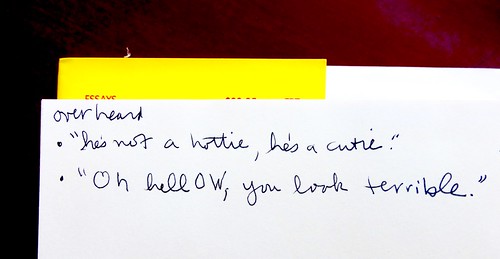From "Why Do We Leave Notes on Top of Mountains? It’s Personal/For centuries, people have left all sorts of notes in summit registers. I looked through 100 years of love letters and spontaneous exaltation, including my own family's, to find out why." (Outside).
You can see trends in handwriting styles (neat cursive, like the kind taught by nuns, giving way over time to chicken scratch), as well as music and literature (lots of Grateful Dead and Dharma Bums). Some writers refer to previous entries. Most seemed not to have thought about what they’d write until they arrived. Instead, the words left in registers are simply tactile evidence that someone was there at a certain point in time: alone, with friends, or with the people they love.
One register entry found by the author: "If you are a single woman and made it this far to read these scribblings: I love you!! Marry me!"
And — this isn't in the article, but — here's a quote from "The Dharma Bums": "Oh my God, sociability is just a big smile and a big smile is nothing but teeth, I wish I could just stay up here and rest and be kind."





